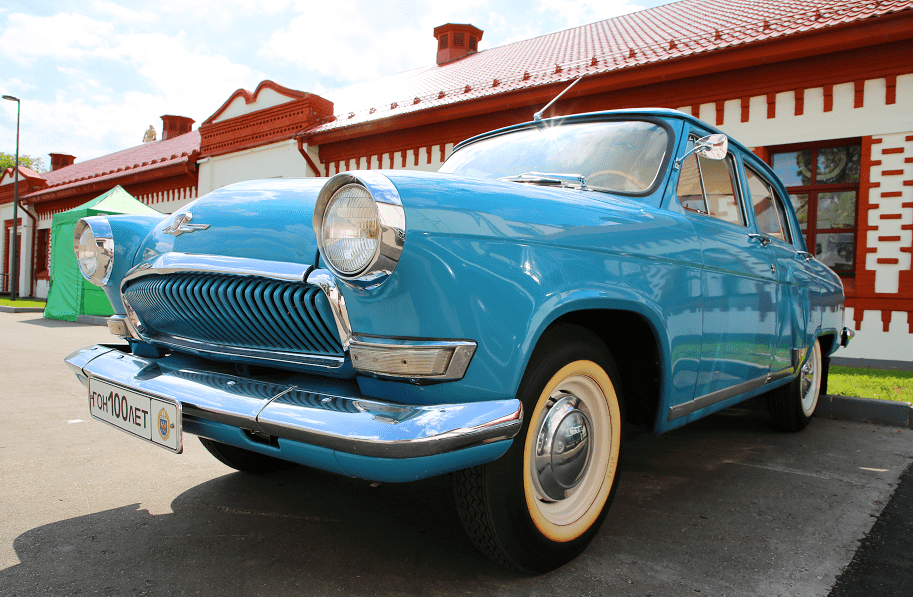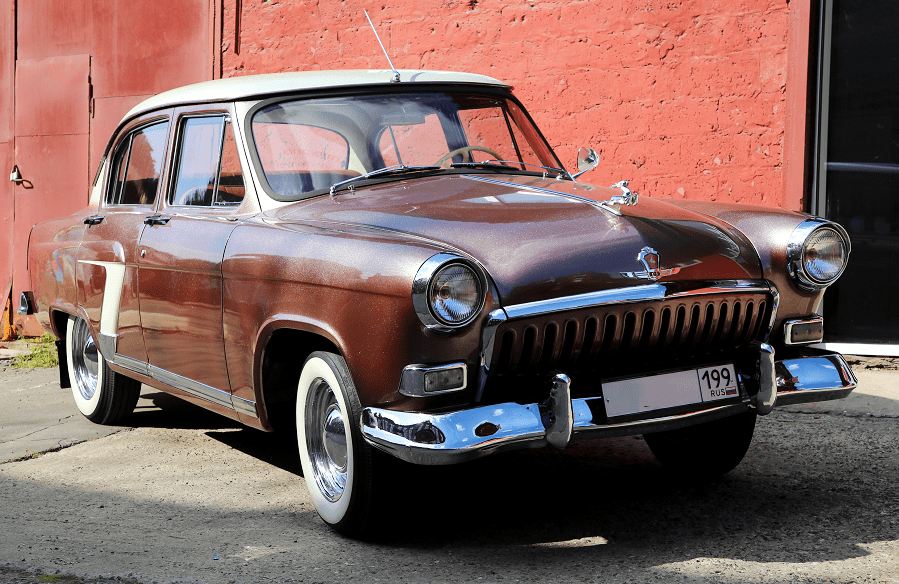GAZ-21 Volga
GAZ-M-21 “Volga” is a Soviet business-class car, mass-produced at the Gorky Automobile Plant from 1956 to 1970. It is the fourth generation and is the “successor” of the GAZ-M-20 Pobeda model. Production of the GAZ-21 at GAZ itself continued until July 15, 1970, but for a long time after that, the assembly of essentially new cars continued at auto repair plants; there are “Remzavod” cars produced until the second half of the 1970s. The factory model index was initially M-21, later (since 1965) – GAZ-21.
Since 1952, parallel work has been carried out on two independent M-21 projects under the mottos “Zvezda” (artist-designer – John Williams) and “Volga” (artist-designer – Lev Eremeev).
In 1953, models of both cars were ready. During this period, “Zvezda” went through several iterations of the design search, in the final one turning into essentially a complete analogue of the “Volga” from the rear doors forward, but with a fastback body with a sloping roof, like the “Pobeda”, and two large fins on the stern. Eremeev’s sedan went into production as more promising – by the mid-1950s, the fastback already looked like a relic of the past, and besides, the complex shape of its rear part raised a number of technological questions. An image of plaster models of both cars is available at footnote.
Since 1953, A. Nevzorov was appointed the lead designer for the car, and N. I. Borisov was the chief designer of the plant for most of the design of the car.
The first running model was made by hand in 1954. There is a known photograph of the M-21 sample with license plate GV00-08 on the Gorkovskoye Highway (now the M7 Volga highway), dated July 9, 1954, thus, at that time the M-21 sample was already actively being tested.
At the same time, many features of the original (presented on prototypes and, in part, the “second series” of 1959-1962) Volga design also go back to the ZiM GAZ-12 – in particular, bumpers and sidelights were made in a similar style – which, obviously, it was supposed to emphasize the stylistic unity of the line of cars from the Gorky plant. The same opinion is shared, for example, by prominent researcher of the issue Ivan Paderin.
Production
The first conditionally serial Volgas were assembled on October 15, 1956; they already had the design of the front end “with a star” – three copies. There were five cars in the 1956 batch.
In the autumn and winter of 1956, eight Volgas (experimental ones from 1954-1955 and cars from the pilot industrial series of 1956) covered 29 thousand km along the roads of Russia, the Baltic states, Ukraine, Belarus and the Caucasus. The final tests of the new model were carried out in the garage of the Gorky regional committee of the CPSU, the 1st Moscow taxi depot and the motor depot of the Komsomol Central Committee, where the first 62 cars from the pilot industrial batch were sent (1956 – early 1957). During their course, numerous shortcomings and shortcomings were identified, most of which were immediately eliminated.
End of production
The last GAZ-21 Volga rolled off the assembly line of the Gorky Automobile Plant at 18:40 on July 15, 1970. It was a modification of 21US in anthracite color.
Assembly: Nizhniy Novgorod (USSR)
Years of production: 1956—1970
Production: 639,478 units
Length: 4770 mm
Width: 1800 mm
Height: 1620 mm
Engine: 4 cylinders; 2432 cm³
Power: 65 HP
Max speed: 120 km/h
Fuel consumption: 12 l/100 km
Weight: 1460 kg
See also Transport blog
See also Cars blog
See also Motorcycles blog
See also Buses blog
See also Shipbuilding blog
See also Motors and Engines blog
See also Trains and railways blog
See also Trucks and Cargo Vehicles blog
See also Tractors and Special Equipment blog
See also Tanks and Armored Vehicles
See also Airplanes blog
See also Helicopters blog
See also Artillery, Missiles and Rockets blog
See also Bicycles blog

















